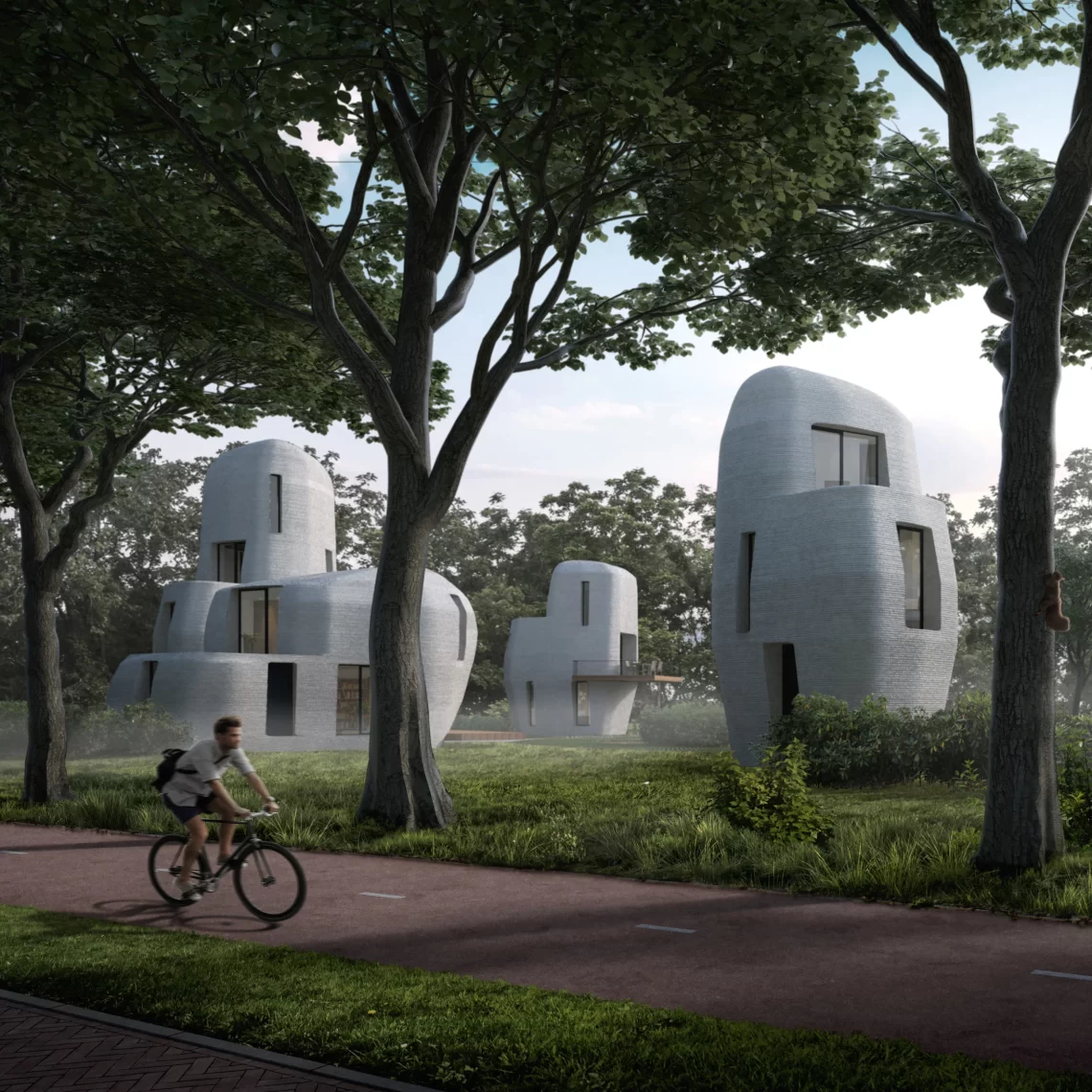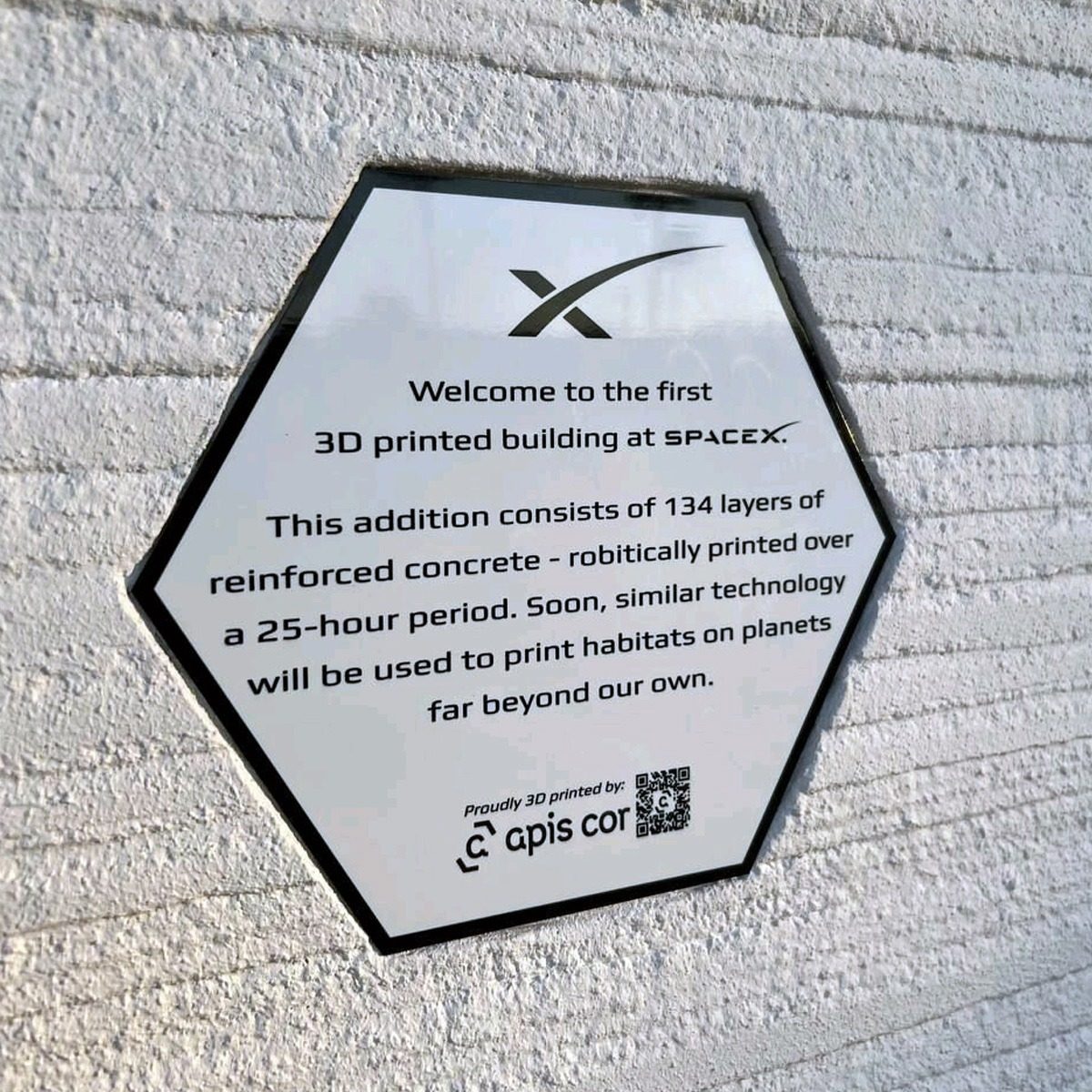Need help? Call 0115 794 0445
4.9
Important Information
We're currently experiencing technical difficulties with our phone lines, please email [email protected]
Need help? Call 0115 794 0445

Credit: Bart van Overbeeke/Project Milestone
3D printing houses seems a thing of the future, however, they are now a practical reality. With countries all around the world now adapting this new and innovative method of construction. 3D printing houses isn’t actually new, Chinese company Winsun has been using this method of construction since 2013 when they found these structures we able to be produced at 10% of the cost and time of traditional construction methods.
So how does it work? 3D printing works on the principle of using data from 3D CAD (Computer-Aided Design) and transforming it into a physical model by depositing material layer-by-layer. Traditionally the machines have been expensive, however, the technology has made its way into more homes and businesses in recent years.
The idea behind this type of 3D printed home is to construct them either on-site or out of prefabricated panels. Due to its quick production cycle and low-labour costs, this could mean that these structures could be produced quickly enough to be used in scenarios such as natural disasters (earthquakes, tsunamis, etc) and could be used to temporarily shelter displaced people.

Credit: Dezeen
3D printing houses in concrete is a reality today. In the UK, some companies such as Xcavate Robotics are beginning to adopt this technology for use in UK based construction projects.
This new innovative company is planning on using this technology to create sunken apartments in dense urban spaces such as London. Xcavate Robotics are excavating homeowners gardens and using robotic heads to 3D print basement apartments in peoples lawns. This new method of construction limits neighbour disputes and collapsing construction by building under gardens rather than gouging into the foundations that prop up houses.
“People will be invited to come and see how the robot can build fast and safely,” says CEO Senake Atureliya, an electromechanical engineer.
Xcavate Robotics are promising to deliver a subterranean one-bedroom apartment for £300 per sq ft. This innovative new method of construction will help reduce costs whilst maintaining all building regulation requirements.
“Where our method of construction differs is that we create reinforced concrete shells for the apartment and its optional sunken courtyard garden above ground, and then use robotic diggers to sink them faster than would be possible with conventional mini-excavators.” says CEO Senake Atureliya.
Flood risks can be minimised by getting a basement impact assessment before even contemplating a dig, he says. The current show home in Acton is being sunk into a clay layer 12m thick, averting any risk of the one-storey apartment coming close to the base or the aquifer beneath.
Europe’s first 3D printed house has been occupied by a Dutch couple, who are believed to be Europe’s tenants of the future. Elize Lutz and Harrie Dekkers, retired shopkeepers from Amsterdam, received their digital key – an app allowing them to open the front door of their two-bedroom bungalow at a press of a button.
The first of five planned homes by construction firm Saint-Gobain Weber Beamix is an unusual and innovative design, which has been inspired by the shape of boulders found in nature. The property was built on land beside the Beatrix canal; it’s difficult to construct using traditional methods because they’re so irregularly shaped, but this new plan solves that problem!
Those behind the Dutch house are said to have pipped their rivals by being the first legally habitable and commercially rented property where load-bearing walls can be made using 3D printer nozzles. With 94sq metres of living space, this futuristic home is a practical and cost-effective reality.
“This is also the first one which is 100% permitted by the local authorities and which is habited by people who pay for living in this house,” said Bas Huysmans, chief executive of Weber Benelux, a construction offshoot of its French parent company Saint-Gobain. In the construction industry, 3D printing is seen to cut costs and environmental damage by reducing cement consumption. It also provides an alternative when there’s a shortage of skilled bricklayers in the Netherlands at this time.
This new structure consists of 24 concrete elements constructed off-site at a factory in Eindhoven before later being transported by lorry to the building side and fixed onto a pre-cast foundation. Once the structure was in place, a roof and window frames were later fitted.
The construction firm plans to move the 3D printed structures later on-site to help reduce lead times, transportation costs, and environmental impact.
Lutz and Dekkers, a family of six with four different homes in the past six years since their two grown daughters left home to live on their own for an extended period, are now paying €800 (£695) per month. The rent fee isn’t too bad, considering how much these individuals have been charged in the past. They plan to live in the property for six months, successful in their application after seeing an advertisement online for the development. “I saw the drawing of this house, and it was exactly like a fairy tale garden,” said Lutz.
“With 3D printing, you generate a huge creativity and a huge flexibility in design,” he added. “Why did we make so much effort to print this ‘rock’? Because this shows perfectly that you can make any shape you want to make.” Yasin Torunoglu, the alderman for housing and spatial development for the municipality of Eindhoven, said: “With the 3D-printed home, we’re now setting the tone for the future: the rapid realisation of affordable homes with control over the shape of your own house.”

Credit – FT
Recently in December, it came to light that Space X has been experimenting with 3D printing houses in concrete near its base in Texas, USA. In collaboration with Apis Cor, the structure was 3D printed over a 25-hour period and consists of 134 layers of reinforced concrete. This structure was recently discovered by YouTuber Jarret Gross and is currently being used to home employees near the launch site of their Falcon rockets.
This fantastic development reflects Space X’s aspirations for space travel. It’s a commitment towards developing similar technology which can be used to print habitats on new planets using locally available resources.

Credit – Space X
Do you have a 3D printing project we can help with? Please get in touch

Managing Director at SGD 3D Limited
Explore cutting-edge 3D printing solutions with our expert service, offering the latest technologies, a diverse material selection, and complimentary UK-wide delivery. With 100+ 5-star reviews on Google, it’s no surprise why so many customers trust us with their 3D printing needs!
